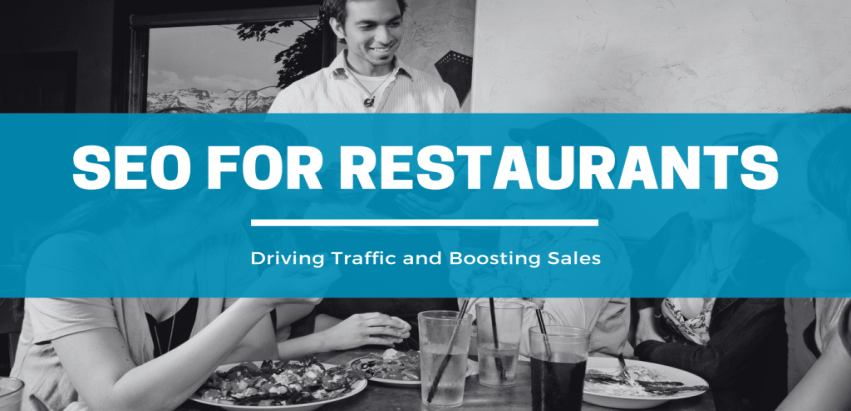

In the bustling world of dining, where customers increasingly turn to Google to find their next meal, restaurant owners face fierce competition.
With 89% of diners researching restaurants online before visiting (OpenTable, 2024), SEO for Restaurants is critical for attracting hungry customers.
A well-optimized website serves as your digital storefront, driving traffic, bookings, and loyalty. This ultimate guide, tailored for restaurant owners, explores how a website and SEO work together to elevate your restaurant’s visibility in 2025, using semantic SEO to align with user intent and search trends.
SEO for Restaurants involves optimizing your restaurant’s website to rank higher on search engine results pages (SERPs) for keywords like “best restaurants in [City],” “Italian dining near me,” or “family-friendly restaurants in [Neighborhood].”
Paired with a user-friendly website, SEO ensures potential customers find your business when searching for dining options. Semantic SEO enhances this by focusing on user intent, related concepts (e.g., cuisine types, dining experiences), and context, making your site more relevant to search queries.
A website is the cornerstone of your restaurant’s online presence, acting as a hub for SEO efforts. Here’s why it matters:
First Impressions: A professional website showcases your menu, ambiance, and story, enticing customers to visit.
Control Over Branding: Unlike third-party platforms like Yelp, a website lets you control your narrative and customer experience.
SEO Foundation: A website enables on-page optimization, local SEO, and content marketing, driving organic traffic.
Direct Bookings: Integrate reservation systems to capture bookings without third-party fees.
Customer Trust: A modern, mobile-friendly website builds credibility, with 75% of consumers judging businesses based on their website design (WebFX, 2024).
By combining a robust website with SEO for Restaurants, you create a powerful tool to attract and convert diners.
Keyword research identifies the terms diners use to find restaurants, forming the backbone of SEO for Restaurants.
Use SEO Tools: Platforms like Google Keyword Planner, Ahrefs, or SEMrush uncover high-volume, low-competition keywords.
Target Local Keywords: Focus on location-specific terms like “restaurants in [City],” “Italian restaurants in [Neighborhood],” or “[City] fine dining.”
Long-Tail Keywords: Use phrases like “vegan-friendly restaurants in [City] open late” to capture specific, high-intent searches.
Semantic Keywords: Incorporate related terms like “dining experience,” “menu specials,” or “outdoor seating” to align with user intent.
Pro Tip: Naturally weave keywords into your website’s content, ensuring relevance and readability to satisfy Google’s algorithms.
On-page SEO optimizes your website’s pages to improve rankings and user engagement.
Title Tags: Include keywords and location (e.g., “Best Italian Restaurant in Austin, TX | Aarmus Marketing”).
Meta Descriptions: Write 160-character summaries with a call-to-action (e.g., “Savor authentic Italian cuisine in Austin, TX! Book a table at Aarmus Marketing’s top restaurant.”).
Menu Pages: Craft unique descriptions for dishes, using keywords like “gluten-free pizza” or “craft cocktails in [City].”
Blog Posts: Publish content on “Top Dining Spots in [City],” “How to Host a Private Event,” or “Seasonal Menu Highlights.”
About Page: Share your restaurant’s story, highlighting cuisine, ambiance, and values.
Structure content with H1, H2, and H3 tags:
H1: Best Restaurants in [City]
H2: Our Signature Dining Experience
H3: Explore Our Menu Specials
Use descriptive file names (e.g., “italian-pasta-austin-tx.jpg”).
Add alt text with keywords (e.g., “Authentic Italian pasta dish in Austin, TX”).
Compress images to boost site speed.
Local SEO is vital for attracting diners in your area.
Claim your Google Business Profile (GBP) with accurate details (name, address, phone, website).
Upload photos of dishes, dining areas, and staff.
Encourage reviews to build trust, as 82% of diners read reviews before choosing a restaurant (BrightLocal, 2024).
List your restaurant on platforms like Yelp, TripAdvisor, OpenTable, and local directories.
Ensure consistent NAP (Name, Address, Phone) across all listings.
Create pages or posts like “Guide to Dining in [Neighborhood]” or “Best Brunch Spots in [City].”
Highlight local events, such as food festivals or charity dinners.
A fast, secure website enhances both SEO and user experience.
With 70% of restaurant searches on mobile (Google, 2024), ensure your website is responsive.
Test with Google’s Mobile-Friendly Test tool.
Use Google PageSpeed Insights to fix slow-loading issues.
Compress images, enable caching, and minify CSS/JavaScript.
Use HTTPS to protect customer data and improve Google rankings.
Submit an XML sitemap to Google Search Console.
Use a robots.txt file to guide crawlers.
Implement restaurant schema for rich snippets (e.g., menu, hours, reviews) using Schema.org.
Content marketing engages diners and supports SEO for Restaurants.
Publish posts on “Best Dishes for Date Night,” “2025 Food Trends,” or “How to Choose a Restaurant in [City].”
Use keywords like “SEO for Restaurants” or “dining in [City].”
Create videos of chef specials, behind-the-scenes kitchen tours, or customer testimonials.
Optimize titles and descriptions and host on YouTube, embedding on your site.
Share promotions, seasonal menus, or event invites.
Include links to drive traffic and support SEO.
Backlinks from reputable sites boost your website’s authority.
Avoid buying links to prevent Google penalties.
Monitor your SEO for Restaurants efforts:
Review data monthly to optimize performance.
Stay updated on Google algorithm changes.
SEO for Restaurants paired with a well-designed website is a recipe for success. By optimizing for local keywords, creating engaging content, ensuring technical performance, and building authority, restaurant owners can attract more diners and boost bookings. Start today to dominate your local market in 2025.
Ready to grow your restaurant’s online presence? Contact Aarmus Marketing for SEO Services and website development or visit aarmusmarketing.com to get started!
Author
Aarti Patel
Founder of Aarmusmarketing.com, is a Social Media Expert, Creative Director, and Fashion Design graduate. Her passions encompass blog writing, styling, and exploring new destinations. With an innate flair for visual storytelling, Aarti brings a fresh perspective to every endeavor, infusing her work with a blend of creativity and strategic insight.